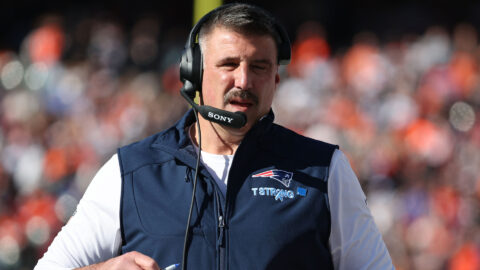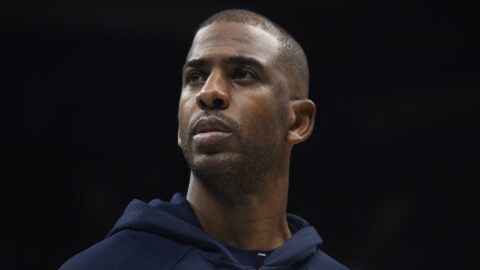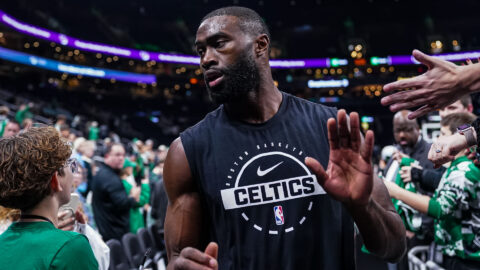Bill Belichick said it himself: Stats are for losers. While that can be true in a lot of areas on the football field, statistics are typically a pretty good way to measure a quarterback. But they can be flawed in that sense, too.
As a whole, New England Patriots quarterback Tom Brady put forth the second-best statistical season of his career in 2009. The 32-year-old had his second-highest completion percentage (65.7), passing yardage total (4.398) and passer rating (96.2), and he tied his second-best marks in touchdowns (28) and interception percentage (2.3). He had superior stats in each of those areas in 2007, which was one of the benchmark campaigns for a quarterback in NFL history.
Looking further, though, Brady was uncharacteristically poor in certain moments, most notably with the game on the line in the fourth quarter and then in the playoffs.
Before addressing the good, bad and ugly, it’d be unfair to put all of the blame on Brady, who worked painstakingly hard in the offseason to recover from left knee surgery and then fought through other difficult injuries throughout the regular season. He also seemed to have a hard time staying in sync with his offensive line with their pre-snap reads, as the line had its share of injuries and rotational issues. Then, there were the much-ballyhooed criticism of the Patriots’ receiving depth, as well as plenty of inconsistencies with the offensive play calling.
The excuses aren’t an attempt to absolve Brady from any wrongdoing, but they at least paint a more detailed picture.
The Good
Brady’s first game back against the Bills had a forgettable start but a very memorable finish, as he completed 39 of 53 passes (73.6 percent) for 378 yards, two touchdowns and one interception that was returned for a score. After the Patriots fell behind 24-13 with 5:32 remaining in the fourth quarter, Brady completed 12 of 14 passes for 112 yards and two touchdowns to bring some magic back to Gillette Stadium.
Midway through the season, Brady passed for 300 yards in five consecutive games for the first time in his career, and it came during Weeks 6-11 while the Patriots were playing their best football of the year. In those five games, Brady completed 134 of 186 passes (72.0 percent) for 1,705 yards, 14 touchdowns and four interceptions. The Patriots went 4-1 in that stretch and scored 37.2 points per game.
Brady once again tormented the Jaguars in Week 16, hitting 23 of 26 passes (88.5 percent) for 267 yards, four touchdowns and no interceptions. Because Jacksonville had a chance to reach the playoffs, Brady’s near-perfect performance inspired optimism in New England, and the Patriots appeared to be peaking prior to the postseason for the umpteenth time. However, it turned out to be the Pats’ last victory of the season.
The Bad
Brady earned his sterling reputation with his late-game heroics, but he only led one game-winning drive in the fourth quarter or overtime all season. For whatever reason, the ice in the quarterback’s veins had thawed. In 2009 late-and-close situations — which are defined by games that are within eight points in the fourth quarter — Brady completed just 37 of 69 passes (53.6 percent) for 313 yards, one touchdown and three interceptions.
Now, let’s take a look at how Brady performed during key fourth-quarter drives this season, each of which resulted in Patriots losses:
Week 2 at Jets
How it started: The Jets led 16-9 with 1:48 remaining, and the Pats took over at their own 10-yard line.
Brady: Completed 1 of 5 passes for 18 yards.
Result: The Jets took two kneel-downs to end the game.
Week 5 at Broncos
How it started: The game was tied 17-17 with 2:27 remaining, and the Pats took over at their own 30-yard line.
Brady: Dropped back to pass once and lost a fumble.
Result: The Pats got the ball back in time for Brady to take a knee in the final play of regulation. The Broncos got the first possession in overtime and won the game.
Week 13 at Dolphins
How it started: The Dolphins led 22-21 with 57 seconds remaining, and the Pats took over at their own 22-yard line.
Brady: Completed 1 of 3 passes for 11 yards and one interception.
Result: The Dolphins took one kneel-down to end the game.
Week 17 at Texans
How it started: The game was tied at 27 with 4:37 remaining, and the Pats took over at their own 23-yard line.
Brady: Completed 1 of 2 passes for -4 yards and one interception.
Result: The Texans scored the game-winning touchdown four plays later, and Brady was pulled in favor of Brian Hoyer.
These were the four games in which Brady had a chance to drive the Patriots down the field for the tying or winning score (their loss to the Colts was discarded because the Patriots only had enough time to run one play before the clock expired) but couldn’t pull it off. In those four drives, Brady completed three of 10 passes for 25 yards, two interceptions and one fumble.
"We just didn’t make the plays when we needed them during the second half," Brady said after the Patriots’ playoff loss to the Ravens while looking back upon some down moments over the course of the season. "There were things that showed up over the course of the year that we didn’t do very well. I reflect a lot on what I need to do as a quarterback, and I need to have a great offseason and certainly play at my highest level next year."
And finally, in the Patriots’ six regular-season losses, Brady completed 128 of 213 passes (60.1 percent) for 1,581 yards (263.5 per game), seven touchdowns and seven interceptions. In their 10 victories, he completed 243 of 352 passes (69.0 percent) for 2,817 yards (281.7 per game), 21 touchdowns and six interceptions.
The Ugly
To be blunt, Brady had his worst performance of the season in his final game. There were points when he and the offensive line were helpless against the Ravens’ pass rush, and it threw the rest of the offense out of rhythm. While the defense put the team in a quick hole, Brady’s three first-quarter turnovers planted the Patriots into a crater.
He completed 23 of 42 passes (54.8 percent) for two touchdowns and three interceptions, and his 49.1 passer rating was the worst of his playoff career. In fact, he’s only had five worse passer ratings in his entire career. Brady had his fewest passing yards in a playoff game in five years and the third-worst completion percentage of his playoff career. The three picks tied his postseason high, and it actually marked the third time in his last six playoff games with three interceptions — this is after throwing just three total interceptions in his first 10 playoff games.
The Synopsis
While Brady could have been better, it was already a victory that he returned from the devastating knee injury without incident. Even with his fourth-quarter shortcomings, Brady wasn’t anywhere near the biggest problem this team had, and he helped account for more wins than losses, especially in a leadership sense. It shouldn’t have been a rebuilding year in Foxborough, but that’s what it turned out to be. Brady made enough progress to warrant much more optimism for next season.



